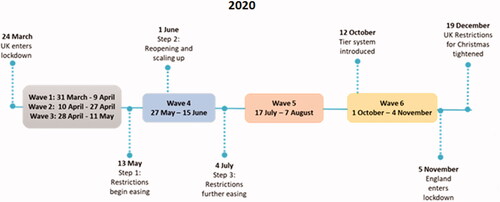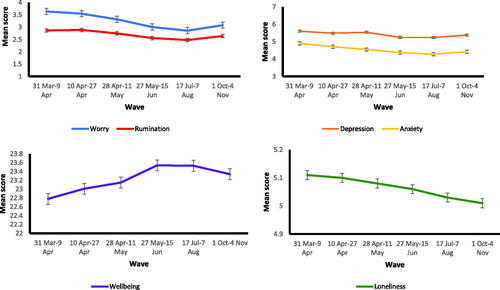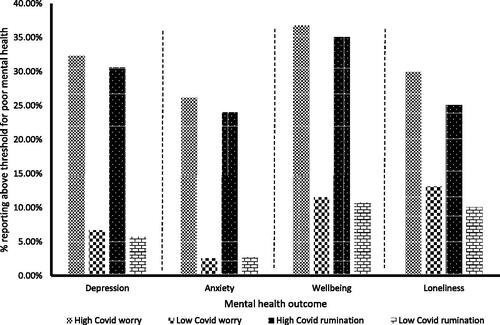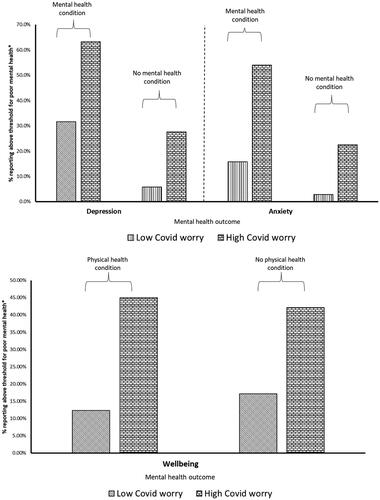Figures & data
Figure 1. Overview of the waves of the UK COVID-19 Mental Health & Wellbeing study and key events during the COVID-19 pandemic in the UK in 2020.

Figure 2. Mean COVID-related worry and rumination, mental health, and loneliness across the six waves (error bars represent standard errors).

Table 1. Mean perseverative cognition and mental health outcomes across the six study waves (31 March 2020 to 4th November 2020).
Table 2a. Effects of COVID-related worry and rumination on depression, anxiety, wellbeing and loneliness across the six waves.
Table 2b. Effects of COVID-related worry and rumination on depression, anxiety, wellbeing and loneliness across the six waves including moderating effects on mental and physical health status.
Figure 3. The proportion of participants with high and low Covid-related worry/rumination that meet the threshold for poor mental health. *Poor mental health as indicated by a score of >10 on the PHQ-9 and GAD, a score of <19.3 on the SWEMWBS, and a score of ≥7 on the UCLA-3.

Figure 4. The proportion of participants with high and low Covid-related worry/rumination reporting clinically meaningful levels of anxiety and depression by mental health condition (upper panel) and poor wellbeing by physical health condition (lower panel). Note: Clinically meaningful levels were indicated by a score of >10 on the PHQ-9 and GAD, and a score of <19.3 on the SWEMWBS.

